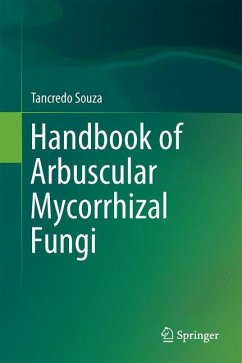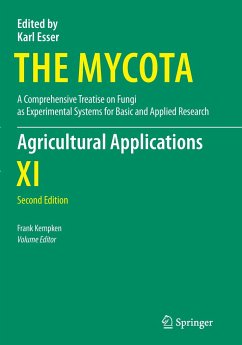
Arbuscular Mycorrhiza
Versandkostenfrei!
Versandfertig in 6-10 Tagen
26,99 €
inkl. MwSt.

PAYBACK Punkte
13 °P sammeln!
High Quality Content by WIKIPEDIA articles! An arbuscular mycorrhiza (plural mycorrhizae or mycorrhizas) is a type of mycorrhiza in which the fungus penetrates the cortical cells of the roots of a vascular plant. Arbuscular mycorrhizae (AMs) are characterized by the formation of unique structures such as arbuscules and vesicles by fungi of the phylum Glomeromycota (AM fungi). AM fungi help plants to capture nutrients such as phosphorus and micronutrients from the soil. It is believed that the development of the arbuscular mycorrhizal symbiosis played a crucial role in the initial colonisation ...
High Quality Content by WIKIPEDIA articles! An arbuscular mycorrhiza (plural mycorrhizae or mycorrhizas) is a type of mycorrhiza in which the fungus penetrates the cortical cells of the roots of a vascular plant. Arbuscular mycorrhizae (AMs) are characterized by the formation of unique structures such as arbuscules and vesicles by fungi of the phylum Glomeromycota (AM fungi). AM fungi help plants to capture nutrients such as phosphorus and micronutrients from the soil. It is believed that the development of the arbuscular mycorrhizal symbiosis played a crucial role in the initial colonisation of land by plants and in the evolution of the vascular plants. It has been said that it is quicker to list the plants that do not form mycorrhizae than those that do. This symbiosis is a highly evolved mutualistic relationship found between fungi and plants, the most prevalent plant symbiosis known, and AM is found in 80% of vascular plant families of today. The tremendous advances in research on mycorrhizal physiology and ecology over the past 40 years have led to a greater understanding of the multiple roles of AMF in the ecosystem.












